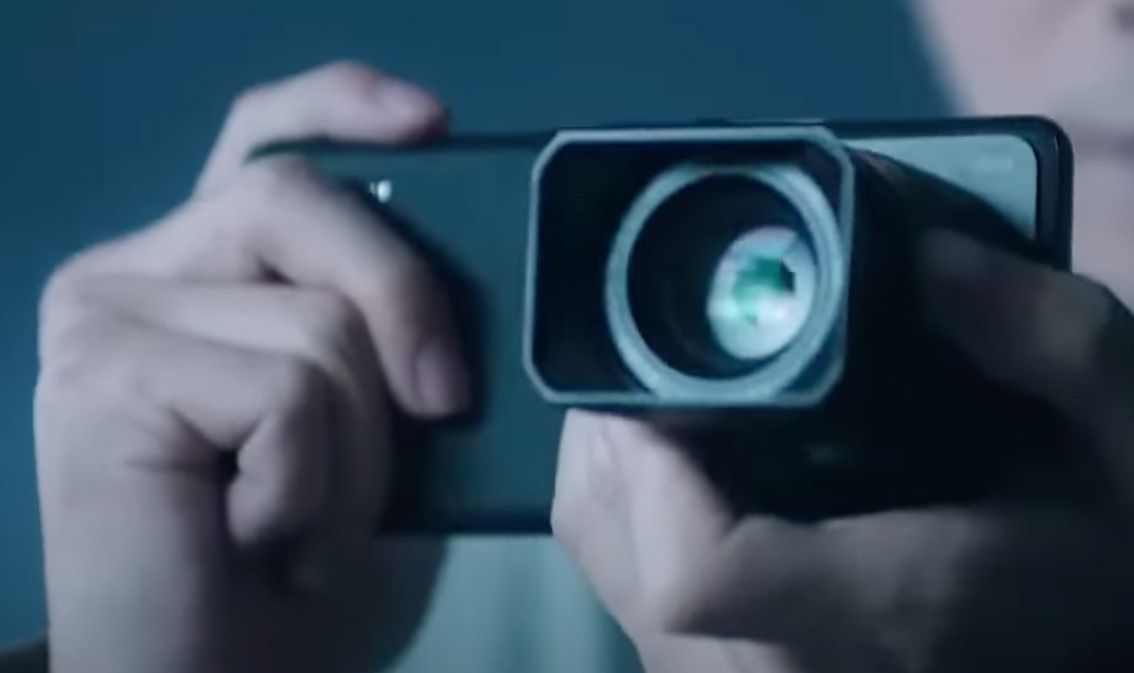Smartphones have been slowly encroaching on the territory of dedicated cameras for the last decade. The combination of rapidly improving camera sensors and very clever software has broken many of the long-held rules of digital imaging. However, the larger sensors and interchangeable lenses have allowed dedicated cameras to retain the lead in image quality. Chinese manufacturer Xiaomi is experimenting with building the first smartphone to truly support interchangeable lenses, and it looks pretty incredible — even if you'll probably never get to buy it.
Xiaomi made its reveal in a video posted to Weibo, showcasing a modified concept phone based on the 12S Ultra, released exclusively in China earlier this year. In its normal state, the phone looks mostly unchanged from the original, but it includes a ring around the camera module that can support a lens adapter with a mount for Leica M-series lenses.
At the center of the camera module is a 1-inch sensor, the 50MP Sony IMX989. This is the same camera sensor found in the Sharp Aquos R6 and Sony Xperia PRO-I. When the lens adapter isn’t attached, this sensor is only covered by a large sapphire glass shield that screws over the top of all of the cameras.
Engadget’s Richard Lai says the 12S Ultra’s primary camera, a second Sony IMX989, is still located off to the side. Meanwhile, the 48MP ultrawide camera that would normally occupy the central location has been moved to take the place of the 48MP telephoto camera, which has been removed entirely. This is the most logical camera to remove since the telephoto lens is the easiest focal range to replace with interchangeable lenses on top of a crop sensor.
The video highlights some of the advantages of using a larger sensor and lenses, particularly the authentic depth of field. Instead of relying on software to fake a blurry background like the portrait mode in most smartphones, that effect happens naturally with this configuration. The sensor itself is also mentioned for the ability to shoot 10-bit RAW stills, and the camera software includes important overlay modes like focus peaking, zebras, and a histogram.
There’s no indication if the adapter includes any optical elements or if it’s just an extension tube with a lens mount. However, while the video frequently references the close collaboration with Leica and the quality of the lenses, it also hints at the possibility of adapters for other mounting systems.
Unfortunately, the video may be exciting to aspiring smartphone photogs, this phone and lens combo doesn’t come without some drawbacks — mainly the lenses themselves. While Leica M lenses are extremely compact, famously durable, and very sharp; they also have no electronics and are entirely manual focus. Additionally, most of them are prime lenses, and the few zoom lenses that do exist are usually limited to a range of a couple millimeters. And finally, there is the price. The cheapest currently available Leica M lens retails for $2,795, and the 35mm f/2.0 lens featured in the video comes in at a cool $3,895. There are even a few that cross into five-digit prices.
Again, this is currently a concept phone and there’s no word to suggest it will go into retail production. A few units were built and shared with influencers for a hands-on, but that doesn’t mean this is anything more than an experiment.
Blending the optics of dedicated cameras with the power of a smartphone has been a popular topic for years, ever since the unrealized potential of the original Galaxy Camera. Interest peaked again with subsequent announcements of the Yongnuo YN450 and Zeiss ZX1. Photographers have plenty of reasons to be excited for the potential of products like these, not least of which is the promise of combining top-tier hardware with the advanced image manipulation software that made it possible for smartphones to become competitive in the first place. Additionally, a real marketplace for apps can open the door to conveniences like cloud sync or automating complicated or tedious workflows.
For now, Xiaomi probably won’t be turning its concept phone into a real product, but perhaps a similar project may be underway for the inevitable Xiaomi 13 family. Only time will tell, and if there’s enough interest, Xiaomi may prioritize a hybrid phone in the future.

